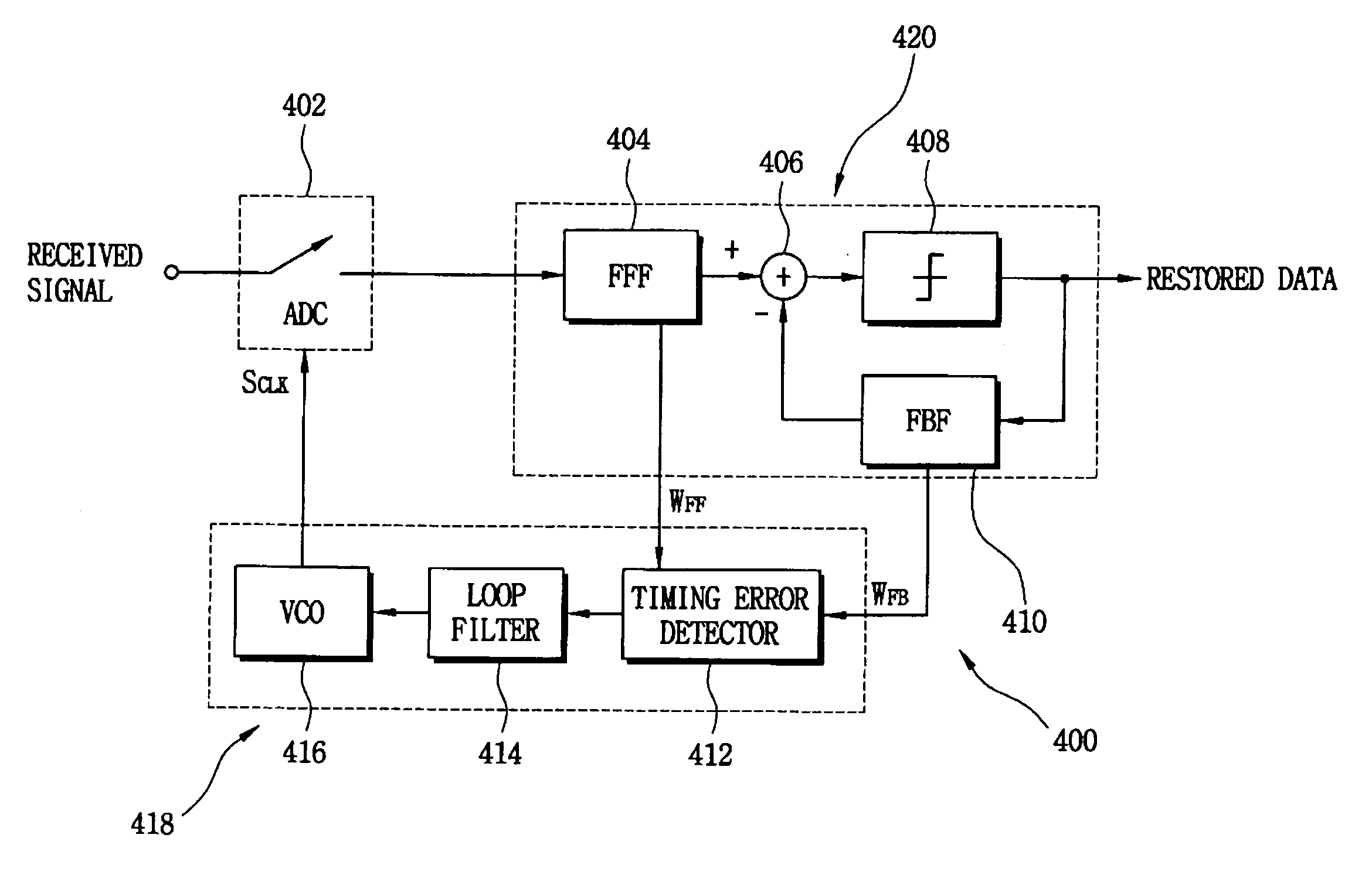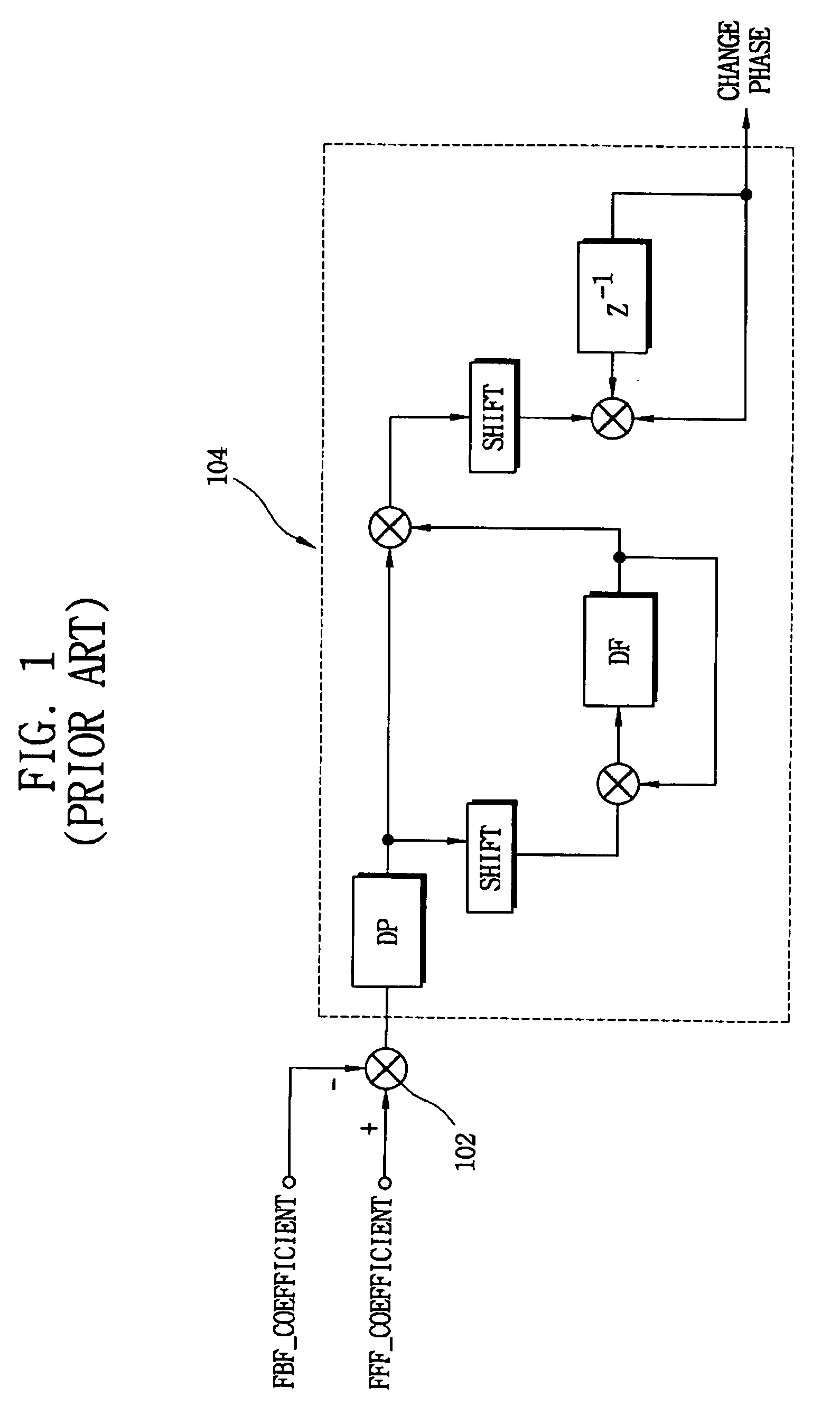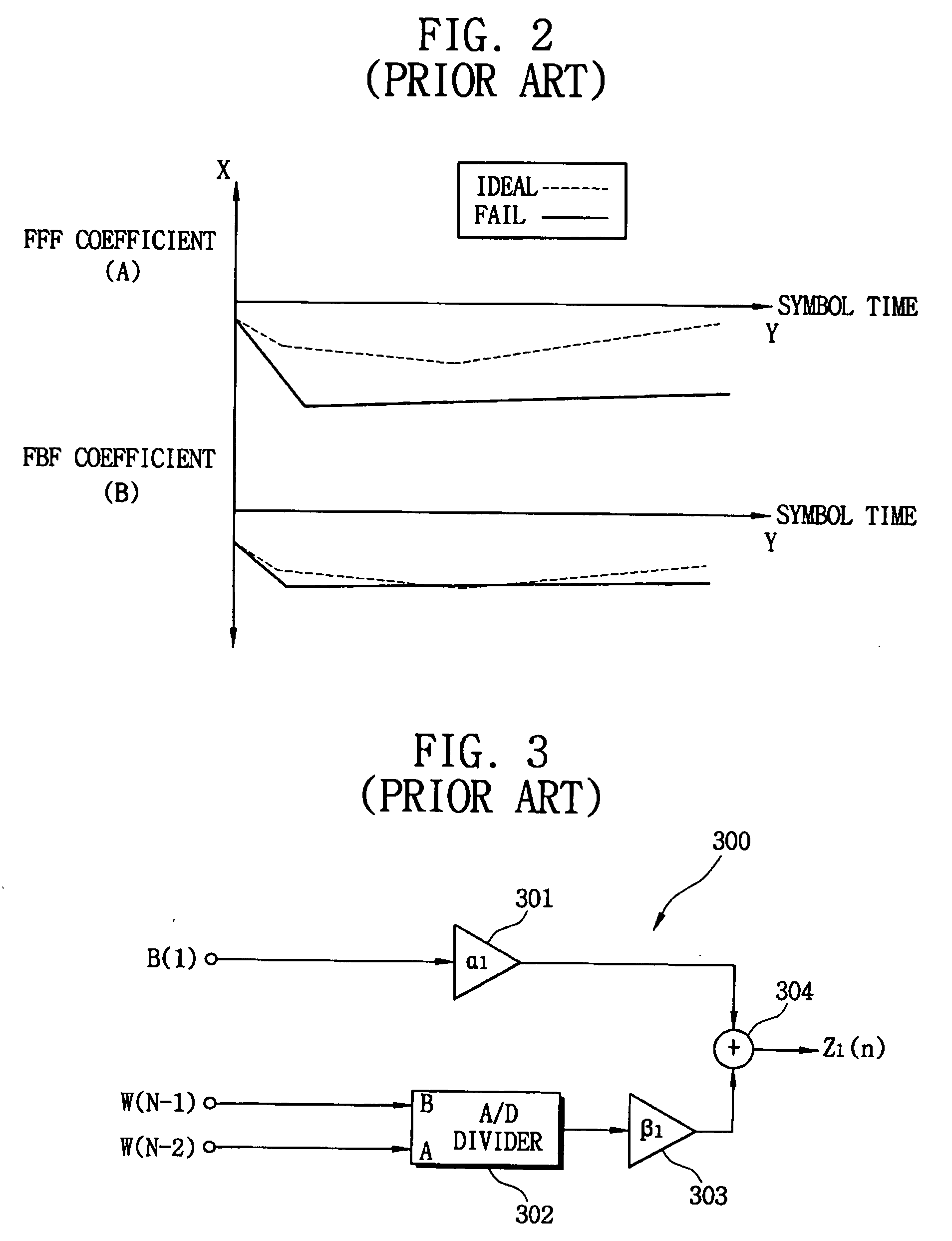Timing recovery circuit and timing recovery method
a timing recovery and circuit technology, applied in the direction of pulse manipulation, pulse technique, baseband system details, etc., can solve the problems of signal arriving at a receiver by different paths showing different time delays, inter-symbol interference (isi), degradation of reception
- Summary
- Abstract
- Description
- Claims
- Application Information
AI Technical Summary
Benefits of technology
Problems solved by technology
Method used
Image
Examples
Embodiment Construction
[0036]FIG. 4 is a block diagram illustrating a timing recovery system according to an exemplary embodiment of the present invention. Referring to FIG. 4, system 400 may be implemented within a symbol-rate receiver, for example, and may include an analog-to-digital converter (ADC) 402, a decision feedback equalizer (DFE) 420 and a timing recovery circuit 418. The timing recovery circuit 418 may include a timing error detector 412, a loop filter 414 and a voltage controlled oscillator (VCO) 416. Timing error detector 412, loop filter 414 and VCO 416 together may form a Phase-Locked Loop (PLL). A feed-forward filter (FFF) 404 and a feedback filter (FBF) 410 are included in DFE 420 in an effort to reduce pre-cursors and post-cursors of the channel impulse response, respectively.
[0037] Referring to FIG. 4, the ADC 402 samples a received signal (which may be a continuous-time signal for example) using a sampling clock (SCLK) and converts the continuous-time signal to a discrete-time sign...
PUM
 Login to View More
Login to View More Abstract
Description
Claims
Application Information
 Login to View More
Login to View More - R&D
- Intellectual Property
- Life Sciences
- Materials
- Tech Scout
- Unparalleled Data Quality
- Higher Quality Content
- 60% Fewer Hallucinations
Browse by: Latest US Patents, China's latest patents, Technical Efficacy Thesaurus, Application Domain, Technology Topic, Popular Technical Reports.
© 2025 PatSnap. All rights reserved.Legal|Privacy policy|Modern Slavery Act Transparency Statement|Sitemap|About US| Contact US: help@patsnap.com



